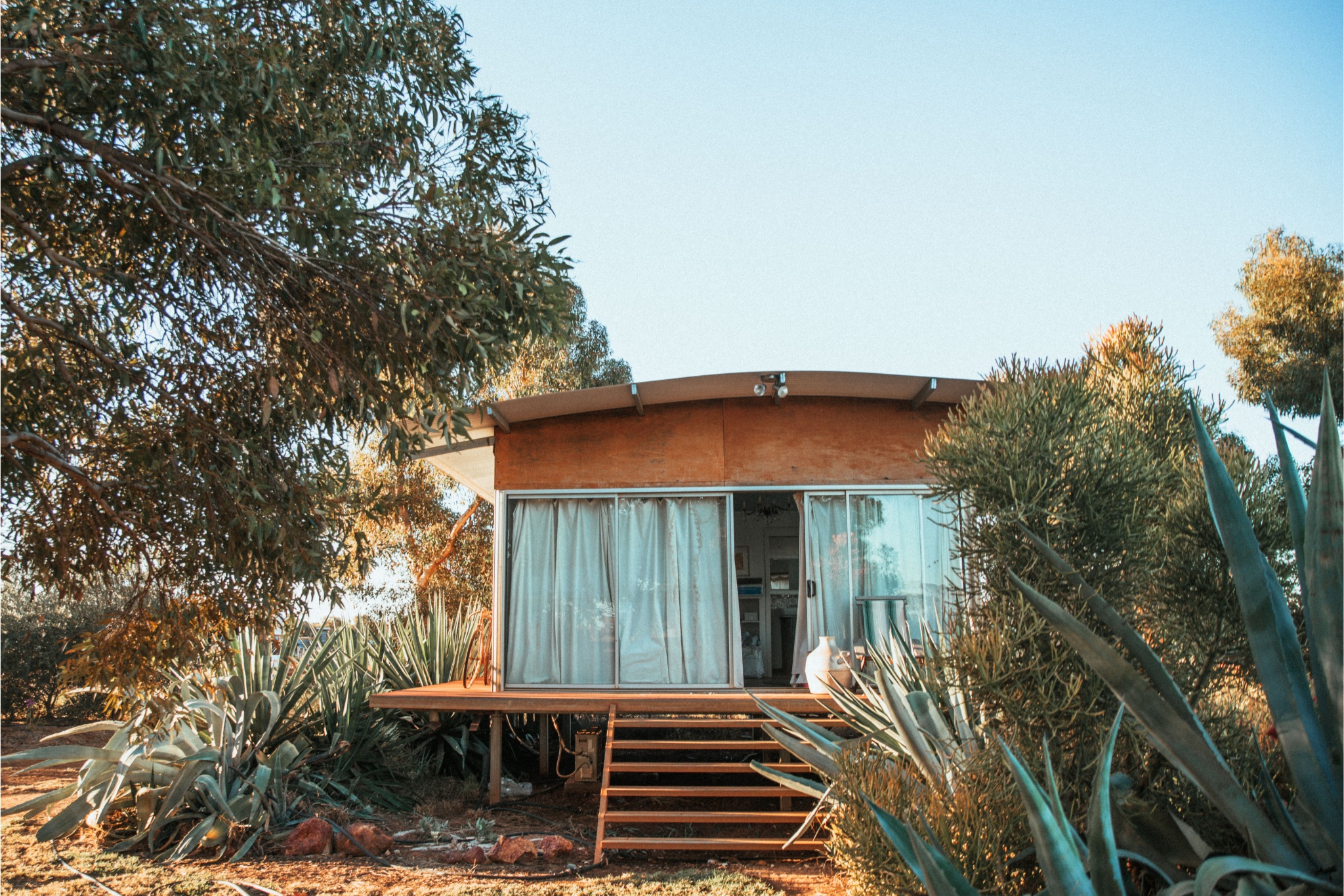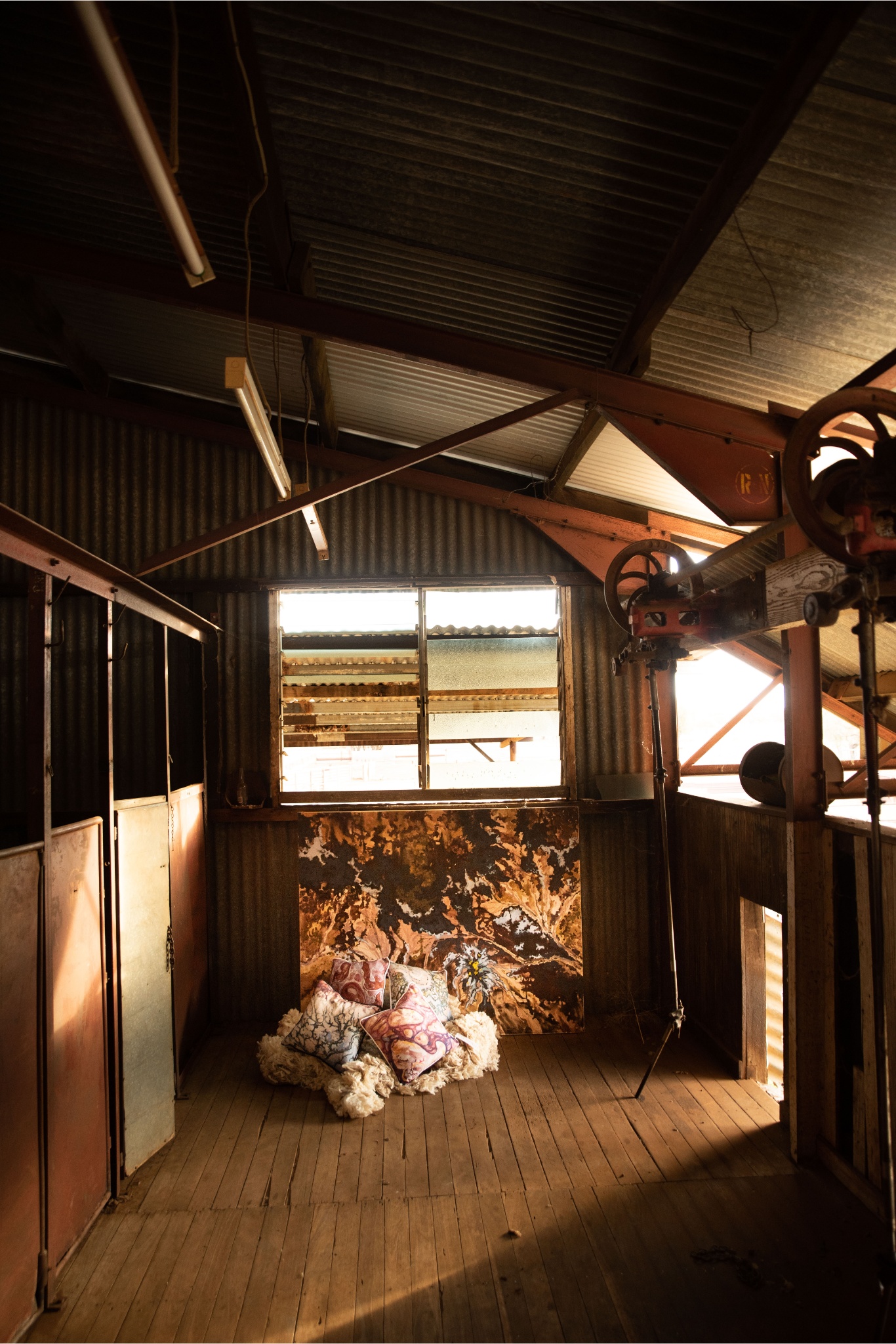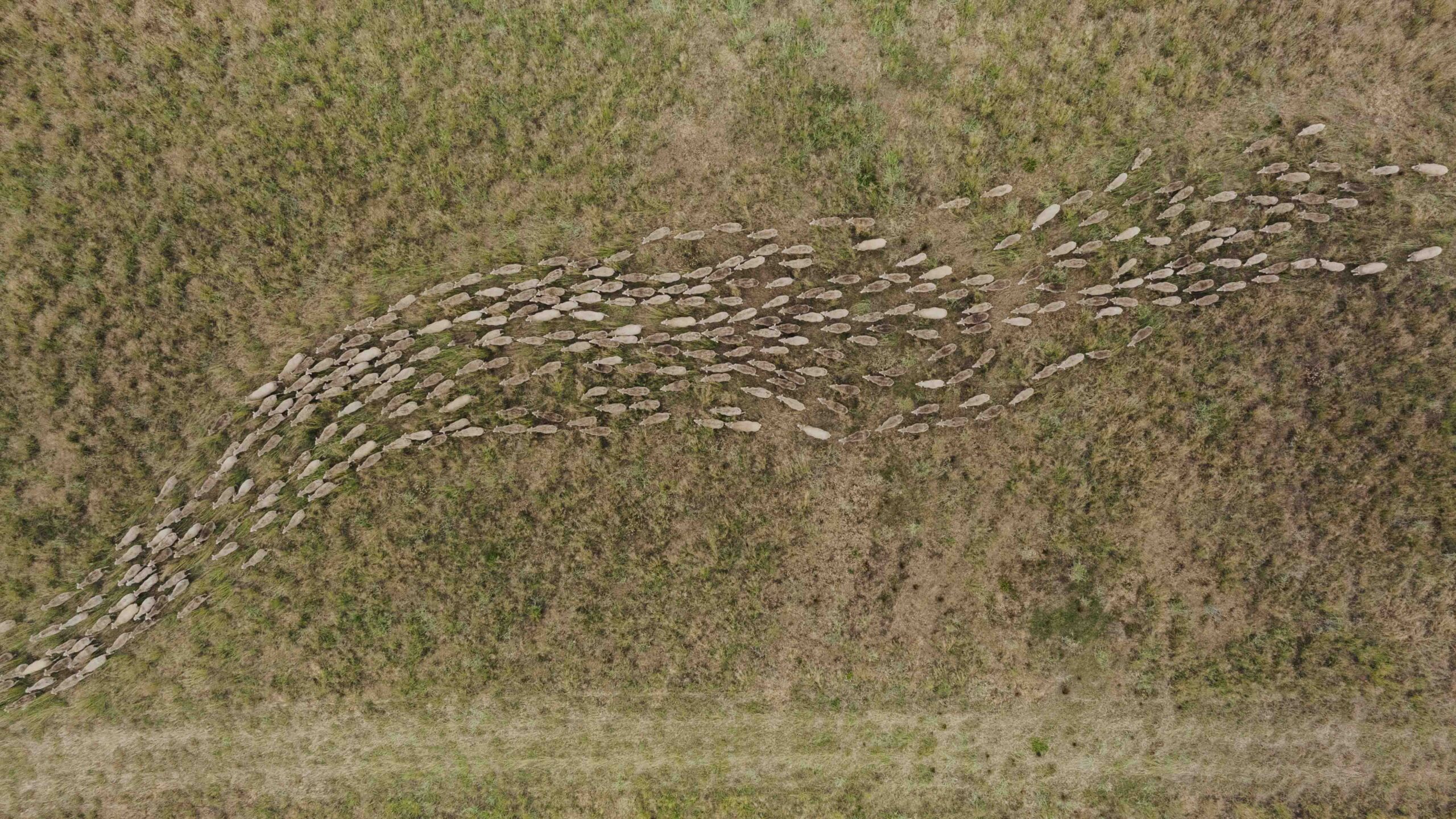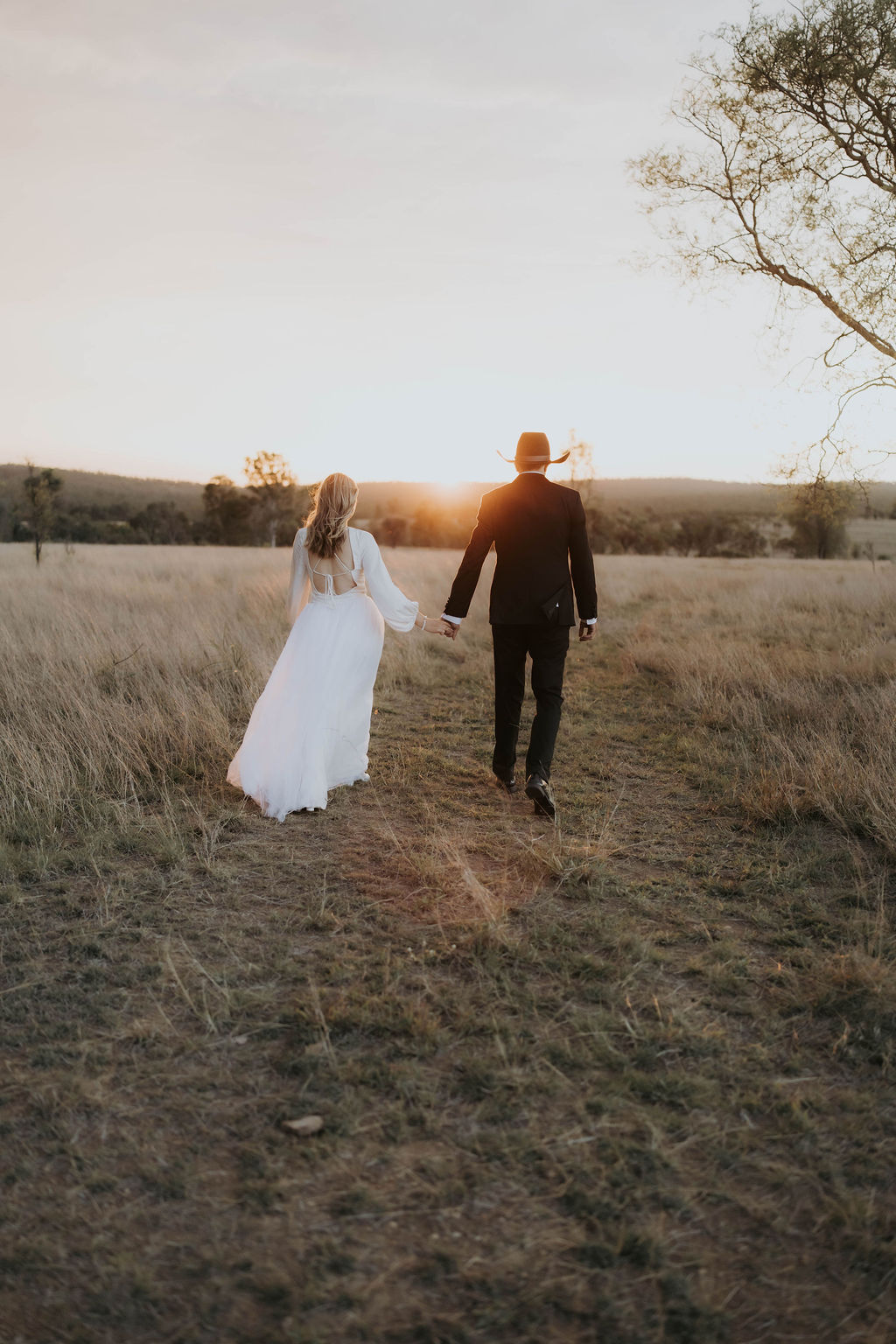Annabel and her husband Stephen own the 73,000 hectare Bunginderry Station, 65 kilometres north west of Quilpie.
PHOTOGRAPHY KATRINA LEHMANN
Sign up to our mailing list for the best stories delivered to your inbox.
Nothing is off the table when the former executive producer of the ABC’s Country Hour speaks to Annabel Tully about life on the remote south-west Queensland property.
WORDS ROBIN MCCONCHIE PHOTOGRAPHY KATRINA LEHMANN
It is rugged country, where harsh drought and wild dogs have taken a toll on those who raise sheep and cattle. But for landscape artist, nurse and mother-of-five Annabel Tully, this is home. She and her husband Stephen own the 73,000 hectare Bunginderry Station, 65 kilometres north west of Quilpie.
As a rural reporter with the ABC, I interviewed Stephen many times in his agripolitical capacity. I first met Annabel when she had an art exhibition in Brisbane and spoke of her battle with breast cancer. Her paintings spoke to me; they depicted the harsh beauty of the country. Across the bottom of one of her works was painted the word ‘Resilience’.
It is tough being diagnosed with breast cancer once, but twice is more than tough. And for Annabel it meant spending months a thousand kilometres away from home, from Stephen and her young family — today Lachlan is 20, Sophia, 19, Harriet, 16, Hugo, 15, and Eve is 14 — while she got treatment in Brisbane.
But Annabel is a self-described “agvocate”, who understands that problems are there to be solved, art is therapy, and family and community are the most important things in her life.
Annabel, tell us a little bit about Bunginderry station.
It’s pretty special to us. It’s the place where Stephen grew up. I was welcomed into that family with open arms, which is really lovely, and we’ve continued to grow our own family here. It’s 80,000 hectares, mixed country, sort of open, rolling, stony boree country that grows beautiful herbage in winter. And then we’ve got classic channel country that floods, going back into those beautiful jump-ups, and the red, creamy colours of the grey range, and plenty of mulga as well. It’s a really well-balanced block. Stephen’s parents did a really good job of buying smaller blocks to amalgamate to create the Bunginderry we know now.
The 2000s have not been terribly kind to producers in western Queensland. I know cattle, sheep and wool prices have been good, but it’s been a difficult time. What’s the situation there now? Has the drought broken in your part of the world?
We’ve worked very hard in the past five years to make sure Bunginderry is less impacted by drought. “The family that fences together, stays together” is my new catch cry! We’ve put up more than 330 kilometres of exclusion fencing around our property and that’s made a huge difference. It allows us to manage our feed, and balance where we put our stock and water infrastructure to ensure we make the most of what little rain we get. Bunginderry is about 80 kilometres from one corner to another, so from Brisbane to the Gold Coast, and you can have a storm in Brisbane but no rain on the Gold Coast, so we need that ability to be able to manage stock. We certainly haven’t had our average rainfall in the past five years; however, we’ve managed to have stock on agistment, we’ve helped out other people who didn’t have options and now we’re just breeding our way out of it again. I wouldn’t say the drought’s broken — we’ve still got a long way to go — but we’ve certainly made improvements to make sure it’s not as devastating.
I believe you really cut back on stock numbers during the drought. How low did you get?
We got to about 50 per cent capacity: I’m talking 3000 head instead of 7000. So we had room to be able to spread stock out. We had a bit of trouble with wild dogs, in terms of where we could and couldn’t put stock. Even though we’ve got the fencing we’ve still got pests and we’re trying to get on top of that.
What does drought mean for you mentally, when it’s day after day of dry conditions and reducing stock numbers?
You’re very much on edge. Every single day there’s a decision that has to be made: there’s no procrastination, there’s no “We’ll have a think about that”, you’re making decisions on a daily basis to ensure your stock stay alive. I liken it to working twice as many hours for half the pay. Those pressures mount up on you. We both take responsibility for the education of our children. We’ve got three at boarding school and two doing tertiary study and the thought of pulling them out of that education was the only thing we couldn’t stomach. You can eat skimpily, you can cut corners but making sure our kids had a really smooth education was number one for us. And then just being really open and honest about how crappy the situation was, talking about it and keeping it real. We’ve never hidden any of that from the kids. It’s every day and it slowly builds. I think that’s the difference between a drought and a fire or flood. I’m not saying it’s more or less devastating, it’s just different. It comes like a slow, creeping mist and then one day it’s engulfed you. It can be extremely overwhelming.
It sounds like all the decisions are joint decisions between you, Stephen and the kids. How hard is that, and how important is it that you do that?
You have to share the burden, particularly when you’re in that state of hypersensitivity. You need someone to bounce ideas off because sometimes you’re not quite seeing things straight. And we’re open to all ideas. We’re talking to our neighbours, we’re talking to our friends, asking them how they’re managing certain problems, what they’re doing, what ideas they’ve got: that constant problem solving is important. Keeping the kids included makes us feel that it’s still worth it, that we’re still working for something.
Stephen is the fifth generation on Bunginderry. Is there a sense that you have a responsibility to the past as well as the future, to maintain and grow and survive during times of drought?
Absolutely. There are so many stories, like the one about the uncle who went out on Christmas Day to chop mulga with an axe to feed his stock. It gives you faith that if they can do it, then we can, too. There’s no reason why we can’t. We’ve got that history that proves it’s possible so, yeah, there is a sense of commitment and connection to the past and the responsibility to be able keep going. It gives you faith. They did it much tougher than us: they didn’t come home to an air-conditioned house!
Put your painter’s hat on. How does the landscape change during drought? Obviously there’s devastation, but do you see beauty in the changing landscape?
When you’re an artist you always have your painter’s hat on. It’s as if I’ve got my blinkers on because I don’t see the devastation when I’m looking at it through my artist’s eyes, I see the beautiful red rich colours; the oranges, the creams, the beiges and the browns. That’s what I love to paint. That bright green that comes through isn’t easy on the painter’s palette, not on mine anyway, because it’s not where I live. Maybe if I lived in the rainforest, it would be a different story. My palette is all the lovely soft greys and pale blues and pinks and reds, so in drought it’s actually spectacular from that point of view. Those red, rocky outcrops will always be there, the gibber plains will always be there, so there’s certainly beauty in the starkness of it.
I think painting helped you through a couple of bouts of breast cancer. You were 38 weeks pregnant with your second child, Sophia, when you discovered you had breast cancer.
Lachlan would have been about 18 months old and, because I’d had trouble breastfeeding him, I decided to be proactive and visit a lactation specialist to see if I could get some help. Lachlan had been an emergency caesarean so I went down to Brisbane to be with family a bit earlier and get that medical support. It was a Tuesday, and I explained to the lactation specialist that I had a small lump in my right breast and I thought that it might have been a blocked milk duct. She said it was possible, but she made a doctor’s appointment for me. So I went through the process. I was there on my own at the time because Stephen was still at home working. Long story short: Sophia was born on the Friday and the following Tuesday I went into surgery. I had a week to heal and then I was straight into chemo. The cancer was small but it was quite aggressive so they moved quite quickly on it. It was a pretty whirlwind situation. I always say Stephen and Sophia have a very close bond because he brought her up. I wasn’t around those first few months.
Did you stay in Brisbane?
No, we went home with our beautiful little family and I went back on my own every three months. I used to leave my two young children — my newborn baby and toddler Lachlan — and get on that plane. It’s a really weird feeling. Anyone who has experienced those early stages of cancer will know that you actually feel well, you don’t feel like there’s anything wrong with you, you just know there’s this insidious thing inside your body that you’ve got to get rid of or you’ll die. It’s a really bizarre feeling as a 29-year-old who’s never had anything wrong with her; it was really quite confronting. I used to get on the plane in Quilpie surrounded by mulga and red dirt, feeling completely fine, having to leave my newborn baby and go down to Brisbane for treatment, and then come home feeling revolting and be thrown into bed for the next couple of weeks. And then you start it again. That’s what it was like.
What made you get out of bed?
I had two kids to look after, I didn’t have a choice. I’m forever grateful that I was in that situation where I did have the kids to make me get out of bed. When there’s a baby crying in the next room, I couldn’t not. So that was actually very good and a very big part of me coping. I’m sure I sat on the floor and cried because kids wouldn’t stop crying and I couldn’t either, but it helped me make a new normal.
And you spoke about community support in times of drought. Is Quilpie a good community? Was there support for you there?
Absolutely. I had a couple of ladies ring me at one stage to ask, “How can we help? Do you want us to cook you dinner?” and I said, “Can you just come? Come and have lunch with me and make me feel normal for a little while.” More often than not the grocery shopping would come out on the mail run and my mail lady would bring it in and help me unpack my groceries. There’d always be a packet of lolly snakes in there for the kids. And at the other end, my family always scooped me up off the plane in Brisbane when I went down for my treatment, so I was really lucky. Stephen’s mum and dad were still home at that stage, too, so my community spread a long way. I was very, very lucky in that sense.
That was your first bout of breast cancer, and it returned after the birth of your fifth child.
I got the all clear after the first round of cancer and we decided we wanted more children; I always said I wanted six. So we had Harriet, Hugo and Eve and thought that was enough. I’d had the magic five years [cancer free], we’d popped the champagne, and we had a really busy little family. Life was fairly normal. It was at about the seven-year mark, when Eve was about two, that I was diagnosed the second time around. I had a lump in my breast — the same breast, interestingly enough — which was benign but we’d been monitoring it every six months for years. Even though I was past the five-year mark I was still having my six-monthly screens, and at one point the lump went from the size of a pea to the size of an orange! So we had to move fairly quickly. This time I did chemo first to reduce the size of the tumour so they could contain it when they removed it. We also decided I would have a bilateral [double] mastectomy: we decided on being proactive because my history suggested it might happen again. My ovaries were removed as well. So, at age 37, that threw me into menopause. Cancer certainly sculpted my life and changed it, as well as my husband’s and my kids’ lives. We’re all fiercely independent
as a result. It’s quite extraordinary, but sometimes I think they don’t know how to be any other way, because they’ve had to be independent.


“I know it sounds a bit clichéd, but I love finding beauty in that starkness or being able to find something good out of a really horrible situation. Being able to CREATE something beautiful… that someone else enjoys, gives me great joy.”
One of the first paintings I ever saw of yours had ‘Resilience’ in script on the bottom of it. Now, I know you loathe that word, but what does it mean to you? And how did art and painting get you through these periods in your life?
I hate the word resilience because it’s often used in the wrong context or can be used quite flippantly. It actually means being able to adapt to change. I think resilience is one of the best traits you can have. If you have the openness and the ability to be able to adapt to change, you will always be evolving, educating, moving with the times, growing and learning from what you already know and being able to embrace what comes on board. A lot of my paintings are quite bare and are drought driven. As I said, I love that palette of the oranges and the browns. I know it sounds a bit clichéd, but I love finding beauty in that starkness or being able to find something good out of a really horrible situation. Art and being able to create something beautiful despite the fact that I’m at a watering point surrounded by a bag of bones, and being able to paint something that someone else enjoys, gives me great joy.
How do you feel when you’re painting?
That’s a really good question. It gives me freedom. I’m a free kid at heart and when you’re in a situation where you have no control over to your health or the environment that you love, it gives you some control over what you can do. I work in a very fluid manner: there’s a lot of water moving around the canvas and I’m dropping in puddles of red earth and actually using what I’ve got at my feet on my canvas. It’s that freedom, to be able to create whatever I want. To me that’s perfect. It sounds like you’re always looking forward, looking for new ideas; as Stephen says, you can’t sit still. It’s just the excitement of something new. I’ve always been like that. I never want to travel down the same road twice. I always look for a different route.
You’re a remote area nurse. Why did you take up nursing?
I originally trained as a phys ed teacher so anatomy and physiology has always interested me. There were two main reasons I took up nursing. Firstly, we needed some off-farm income to ensure the kids could stay at school. That terrifying thought of having to pull them out of education — we weren’t going there. The other reason was that I felt, after all my treatment — I had 10 operations in two years, so the anaesthetic mixed with the chemo, combined with the brain fog of menopause — I actually could not think. The way I explain it to my kids, it’s like I have a silent stutter, when I struggle to get my thoughts together and I can’t speak, and the kids fill in the gaps for me and I hate that. I say to them, just give me a sec because I’m not as sharp as I used to be. So I had to do something completely differently to put a bomb under my brain. I really needed to get my neural pathways firing again, and that’s why I chose to do something completely different. Plus I love people, I love caring for them and being able to give back.
Your husband Stephen is very proactive. I know that the Prime Minister and various ministers for agriculture have visited you. You’ve been very vocal about things like supporting agriculture and the importance of exclusion fences to keep wild dogs out. During the drought, you built hundreds of kilometres of wild dog fences at $45,000 a kilometre. Why is it so important to do that?
We work it out as $7,000 a kilometre. It was quite simple in the end. We either had to fence or get out. That was the decision. We were going backwards: they were slowly getting on top of us and we were slowly going broke. It was a no-brainer. We found a way to borrow the money and we’re still paying it off.
How has the fencing changed the management and the welfare of the sheep and cattle you’ve got on your place? Has it worked?
Absolutely. We’ve now got the opportunity to manage our pastures a lot better and shift stock accordingly. We’re starting to use areas of the place that we haven’t used for a very long time. We’re putting sheep back into paddocks that we haven’t had anything in for 10 years, since we lost thousands of stock to wild dogs.
Stephen wasn’t backward in coming forward when he was talking about the needs of farmers in the region, supporting agriculture and getting rid of red tape. What would you say to the Prime Minister about health services in regional Queensland?
Certainly mental health is the big one and it’s very real for anyone on the land, especially when you’re dealing with the pressures of drought. There have been some really good inroads, but we’ve still got a long way to go. I was testing the waters a couple of months ago, and the fact that I couldn’t find help makes me think we’ve still got a long way to go.
Visit Annabel’s Facebook page to see more of her art and designs.
Subscribe to Graziher and never miss an issue of your favourite magazine! Already a subscriber? You can gift a subscription to someone special in your life.
To hear more extraordinary stories about women living in rural and regional Australia, listen to our podcast Life on the Land on Apple Podcasts, Spotify and all major podcast platforms.


What began as a postcard-perfect country wedding soon became a story of survival, strength, and the unshakable heart of rural Australia.

Current custodian Penny Lamont says the heritage garden is designed for easy-care and dry times.